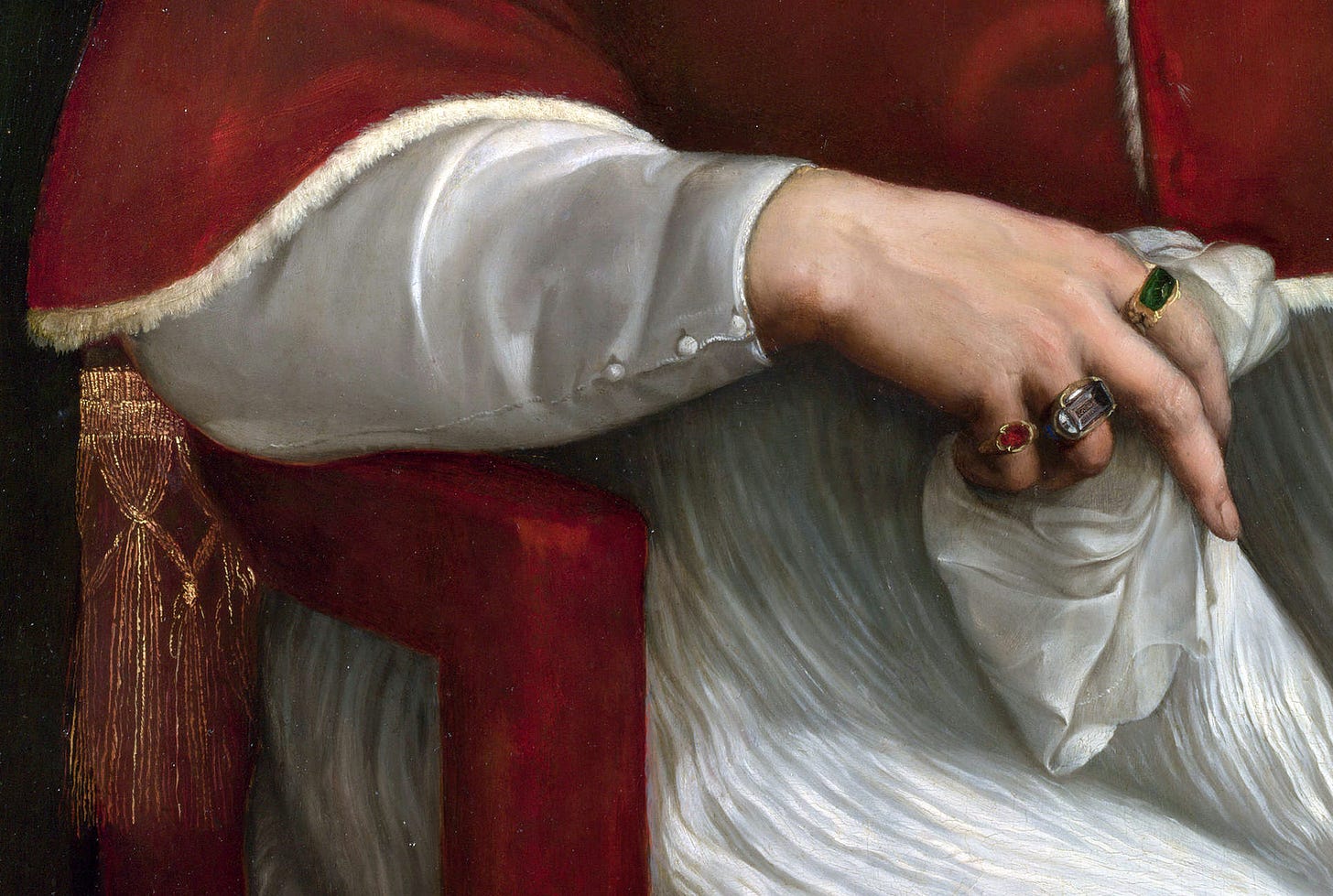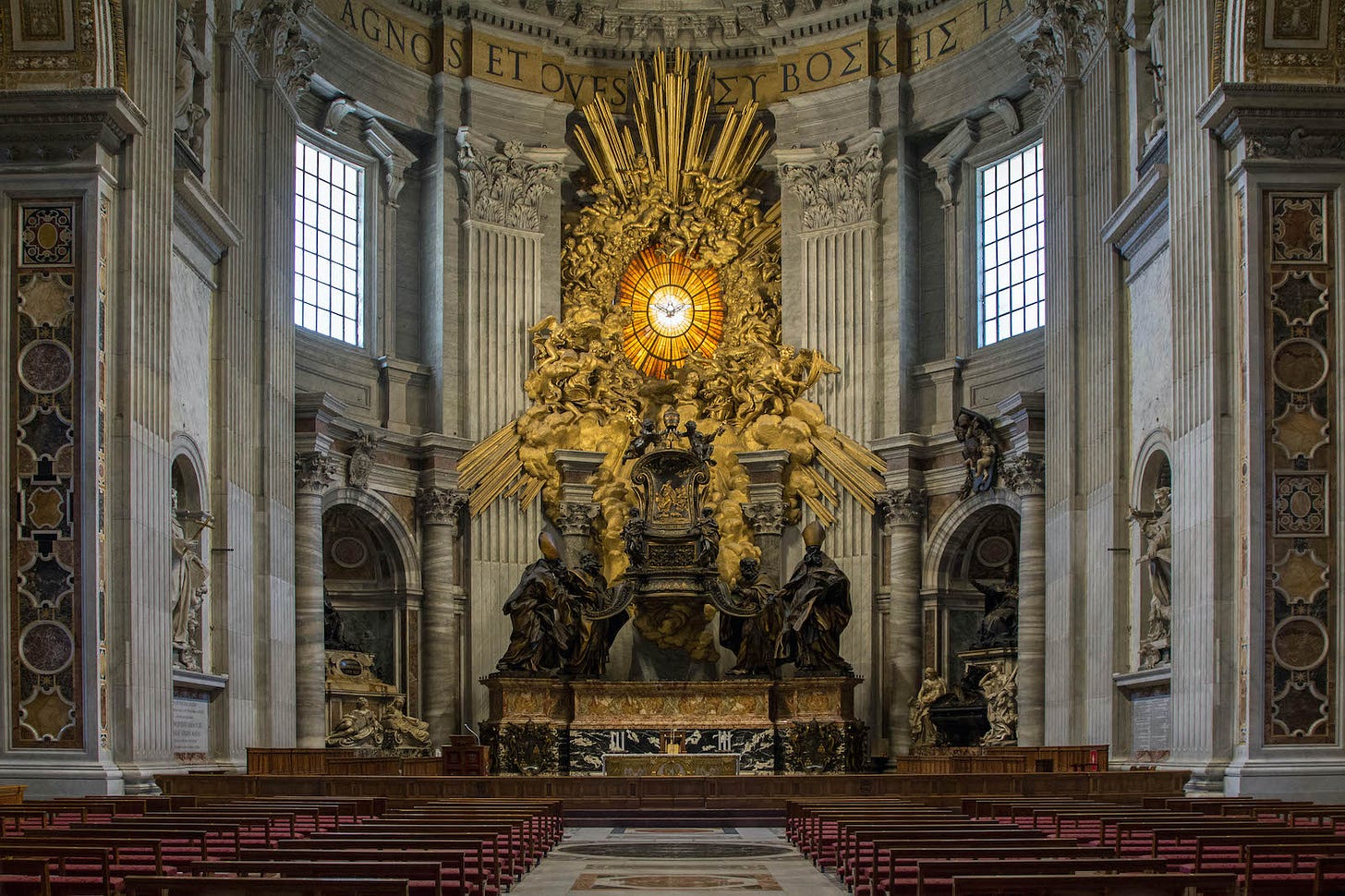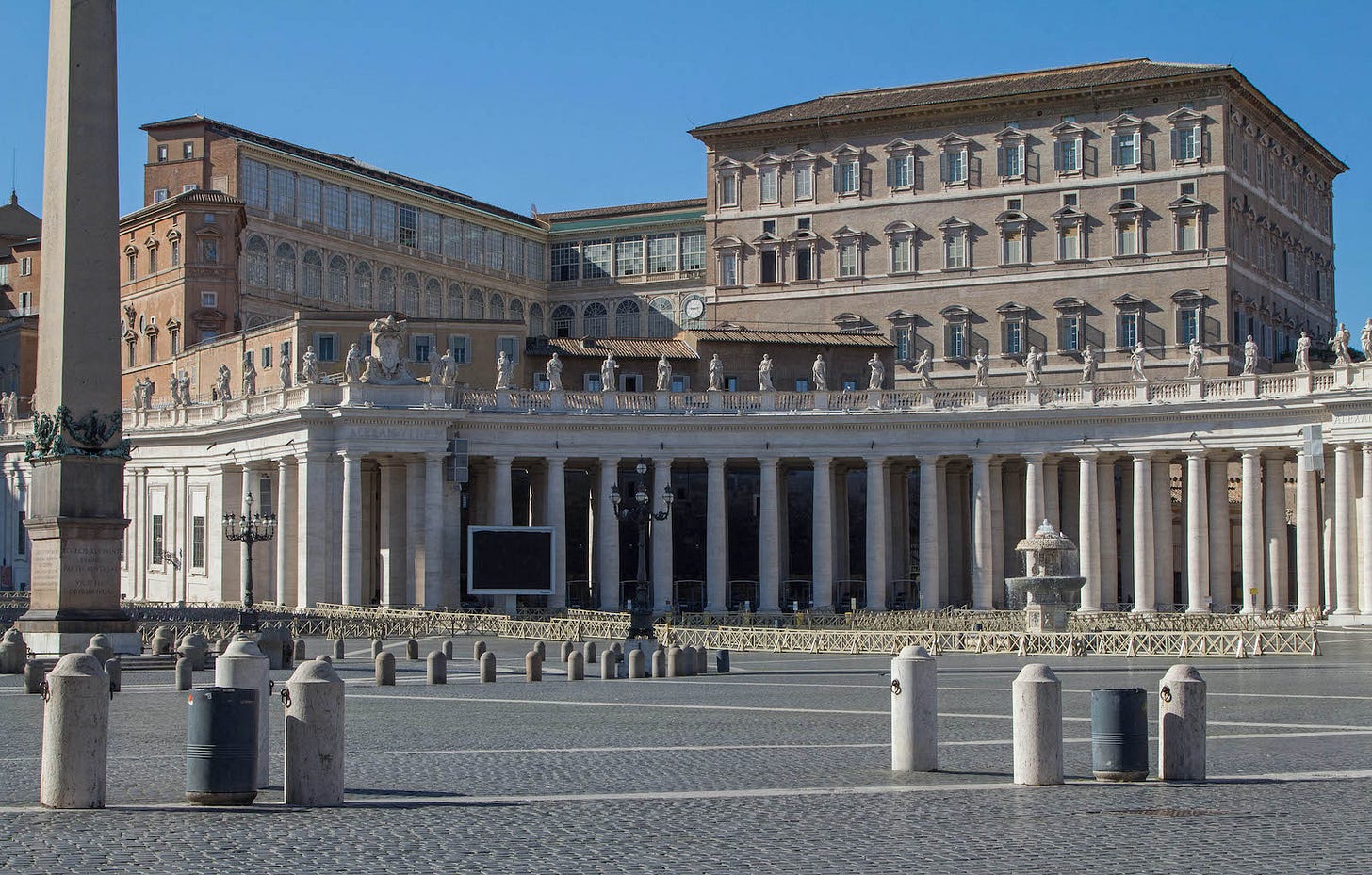How to Elect a Pope
The Church of Rome is about to choose the 266th successor to Saint Peter. Here is how it will do so.
Today all eyes turn towards Rome as the Conclave to choose the successor to Pope Francis begins at 16:30 local time. But what transpires under the magnificent vault of the Sistine Chapel is not just any election — it is indeed the most ancient and most famous mechanism of elective succession in the world.
Conclave, after all, has been the revered method of selecting the Supreme Pontiff ever since 1274. For that is when, in the hopes of avoiding a repeat of the torturous Papal election of 1268, which had dragged on for 1,006 exhausting days, Pope Gregory X codified the process in the Papal Bull Ubi Periculum.
The most famous consequence of the 1274 reform was the notion that the election should be sealed cum clave (‘by key’) — the origin of the word ‘Conclave’. The primary reasons for this are twofold:
To incentivise the Cardinal Electors to arrive at a decision as swiftly as possible
To minimise the risk of outside forces unduly influencing the election
These two fundamental ideals have, despite all other changes, remained the guiding principles of Papal Conclaves ever since.
So what happens after the death of the Supreme Pontiff, and how indeed will the 267th Pope be elected? Today, we explore the entire process from start to finish, and discover the inner workings of the Western world’s sole elective monarchy…
Sede Vacante
Upon the death of the Supreme Pontiff, the Roman Catholic Church is considered to be in Sede Vacante, or with the ‘See Vacant’. This refers to the primary responsibility of the Pope as the Bishop of the See of Rome, with a ‘See’ being the jurisdiction of a bishop, just as a parish is the jurisdiction of a priest.
Since no known modifications to the election procedure were introduced by Pope Francis, the 2025 Papal Conclave will be governed by the Apostolic Constitution known as Universi Dominici Gregis (promulgated by Pope Saint John Paul II in 1996), and subsequently modified by the Apostolic Letters De Aliquibus Mutationibus in Normis de Electione Romani Pontificis and Normas Nonnullas (issued by Pope Benedict XVI in 2007 and 2013, respectively).
Under Sede Vacante, almost all members of the Curia, the collection of entities that assist the Pope in the administration of the Holy See (the government of the Roman Catholic Church), resign with immediate effect. Apart from being a further symbol of the end of a pontificate, this tradition ensures that the new Pope may commence his reign without the potential encumbrance of appointments made by his predecessor.
Until a new Pope is elected, the governance of the Church is entrusted to the College of Cardinals, though under sweeping restrictions. Only those matters of essential everyday business, or those of such urgency that they cannot wait until the end of Sede Vacante, may be ruled upon.
Any and all acts issued by prior Supreme Pontiffs cannot be added to or subtracted from, nor can any dispensation be granted that would circumvent them. A symbolic ceremony of this is performed by the Camerlengo of the Holy Roman Church — presently Cardinal Kevin Farrell — who, upon having ascertained the death of the Pope, seals the entire Papal apartment.
Likewise, the Ring of the Fisherman — the signet ring of the Vicar of Christ — is broken along with the lead seal of the Apostolic Letters, to ensure no fraud is committed in the deceased Pope’s name. This occurs before the death of the Supreme Pontiff is formally announced by the Cardinal Vicar to the people of Rome.

As per Universi Dominici Gregis and Normas Nonnullas, the timeline of Sede Vacante is explicitly fixed. The meeting of the College of Cardinals — known as a Congregation — which takes place after the death of the Pope is charged, as a priority, with choosing the date when the body of the deceased Supreme Pontiff will be brought into Saint Peter’s Basilica for viewing by the faithful.
In the case that the Supreme Pontiff dies outside Rome — as most recently occurred with Pope Pius XII, who died at Castel Gandolfo in 1958 — the Congregation is further charged with the “dignified and reverent” return of his body to the Vatican.
The transfer of the body to the Vatican Basilica must take place within the nine days of funeral rites, which are themselves anchored by the date of the burial, which must occur between the fourth and sixth day after the Pope’s death. Pope Francis indeed passed away on the 21st April 2025, and his burial took place five days later, on the 26th April.
As regards the election of the successor, Normas Nonnullas stipulates the timing of Conclaves:
"I furthermore decree that, from the moment when the Apostolic See is lawfully vacant, fifteen full days must elapse before the Conclave begins, in order to await those who are absent; nonetheless, the College of Cardinals is granted the faculty to move forward the start of the Conclave if it is clear that all the Cardinal electors are present; they can also defer, for serious reasons, the beginning of the election for a few days more. But when a maximum of twenty days have elapsed from the beginning of the vacancy of the See, all the Cardinal electors present are obliged to proceed to the election."
On the Timing of Conclave, Apostolic Letter Normas Nonnullas, Benedictus PP. XVI, 22nd February 2013
The Conclave that commences today, the 7th May 2025, indeed opens on the sixteenth day since the death of Pope Francis.
So what actually happens behind the closed doors of the Sistine Chapel? How does Conclave actually work?
Extra Omnes
Keep reading with a 7-day free trial
Subscribe to INVICTUS to keep reading this post and get 7 days of free access to the full post archives.




